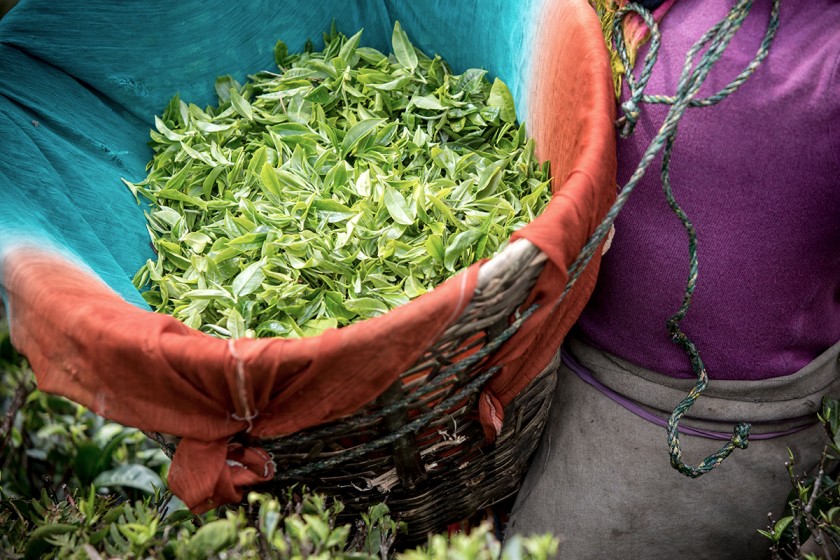The tea industry is affected by the disruption of shipping. The price of tea goes up because the price of a container is hard to find.
The average freight from East Asia to the east coast of North America is $20695. On Oct. 15, the average price of tea at a West Coast destination was $17377, making it more expensive to load and transport a 40-foot container of tea from Vietnam than it carries. According to the Freightos Shipping Index, container freight from northern Europe to the east coast of the United States is $7200, and a recent 20-foot container from India to Argentina is quoted at $6900. In October, containers from Calcutta to Rotterdam cost $9500. Add in the price of limited labor to load Covid-19 and the cost of transportation from the ground to the port, and the cost is easily close to $20, 000. According to Freightos FBX, the average container price was $10396 on October 15th. The Shanghai container freight index rose 464%, with an average cost of $4614 per container. Sea-Intelligence, a Danish logistics data research institute, reported that delays accounted for nearly 13 per cent of global freight capacity. According to the company, time reliability hit an all-time low of 33.6% in August, which means a 2/3 delay in delivery. Air transportation is the preferred way to transport specialty tea. Under normal circumstances, the cost of using a parcel service increases by about $6.50 per pound of tea, or about 40 cents an ounce. But in recent months, fares on some routes have doubled and doubled again. The price of cargo from Frankfurt to Hong Kong has risen 2.2-fold in the past three months to an all-time high of $3.53 per kilogram, according to the new Freightos Aviation Index, which competes with the TAC index. The Freightos WebCargo platform monitors the cargo volume of 30 major airlines and the prices of 10000 freight forwarders, which together account for 40 per cent of global air cargo.

FedEx (FedEx) increased by an average of 5.9%, UPS (UPS) by 4.9% and DHL Express (DHL) by 5.9% from January 1. Retailers that usually offer "free delivery" services raise their minimum orders to $50 and $75, and many charge $15 to $25 for packages weighing less than 500 grams (1 pound). During the outbreak, 1/3 of airlines' revenue came from freight (up from 12% before the outbreak). "retailers may need to rethink the entire 'free delivery' service they offer to customers," Cathy Roberson, head of research and consulting firm Logistics Trends & Insights LLC, told the Wall Street Journal. "it will eventually have to flow to consumers because shippers-such as retailers, manufacturers, wholesalers, etc.-cannot continue to absorb higher costs. They have to be passed on in some form. " Us imports increased by 5 per cent in September compared with 2020, prompting the Biden administration to require u.s. ports to operate 24 hours a day, seven days a week, to reduce congestion. The problem exists at every container-optimized port nationwide, but the worst are Los Angeles and long Beach, which account for 1/3 of U. S. container imports, transporting 950000 containers in August. There were 86 ships idle waiting for berths in Los Angeles and long Beach this week, down from 97 at the end of September, according to Marketplace.org. Although 15000 trucks enter and leave Port Savannah, Georgia every day, 4500 containers remain on the dock three weeks later, the New York Times reported. In China, there were 242 ships waiting to be unloaded at the end of September. Frequent power outages and labor concerns have reduced port capacity in Ningbo and Yantian, and tea from Vietnam has been disrupted by the COVID-19 epidemic. Ports around the world are piling up containers because of a serious shortage of containers in China. The crisis is expected to last until 2022.
Important Notice :
前街咖啡 FrontStreet Coffee has moved to new addredd:
FrontStreet Coffee Address: 315,Donghua East Road,GuangZhou
Tel:020 38364473
- Prev

Is Darjeeling black tea good? Darjeeling summer tea picking gift box which tea garden brand is of higher grade? What are the health benefits of Darjeeling black tea?
The popular Darjeeling Tea comes directly from the picturesque Darjeeling Mountain Station in West Bengal, India. This area is famous for its tea garden and happens to be a very popular tourist destination. Most people living in this area make a living by working in tea gardens. This beer has a very pleasant aroma
- Next

What are the advantages and disadvantages of steam coffee pot? Proper use of steam coffee pot and matters needing attention.
What are the advantages and disadvantages of steam coffee pot? Steam coffee pot commonly known as mocha pot, it belongs to the Italian national class of coffee brewing utensils, it is said that there are 8 regular mocha pots in every 10 Italian households. But the domestic audience is basically very small, its advantage is its portability, it only needs a source of fire, where is it?
Related
- Beginners will see the "Coffee pull flower" guide!
- What is the difference between ice blog purified milk and ordinary milk coffee?
- Why is the Philippines the largest producer of crops in Liberia?
- For coffee extraction, should the fine powder be retained?
- How does extracted espresso fill pressed powder? How much strength does it take to press the powder?
- How to make jasmine cold extract coffee? Is the jasmine + latte good?
- Will this little toy really make the coffee taste better? How does Lily Drip affect coffee extraction?
- Will the action of slapping the filter cup also affect coffee extraction?
- What's the difference between powder-to-water ratio and powder-to-liquid ratio?
- What is the Ethiopian local species? What does it have to do with Heirloom native species?

